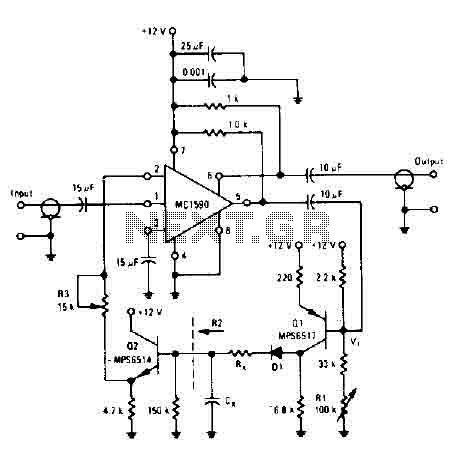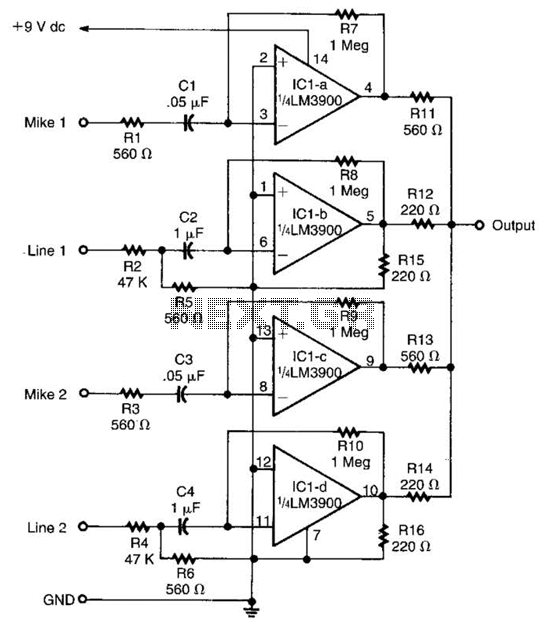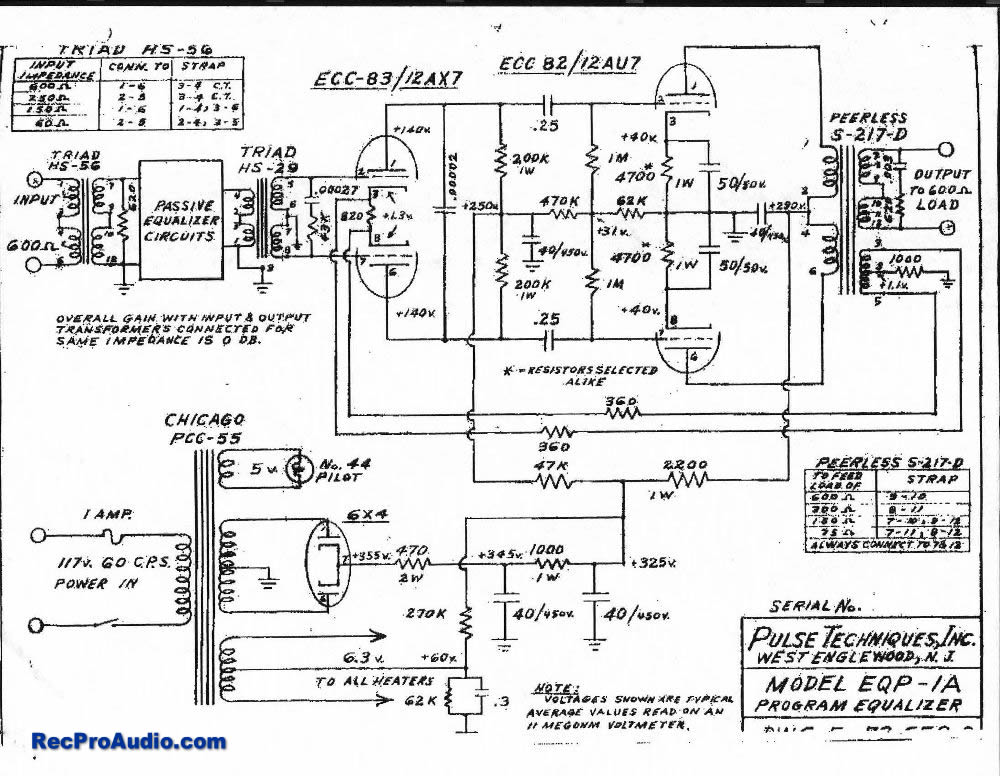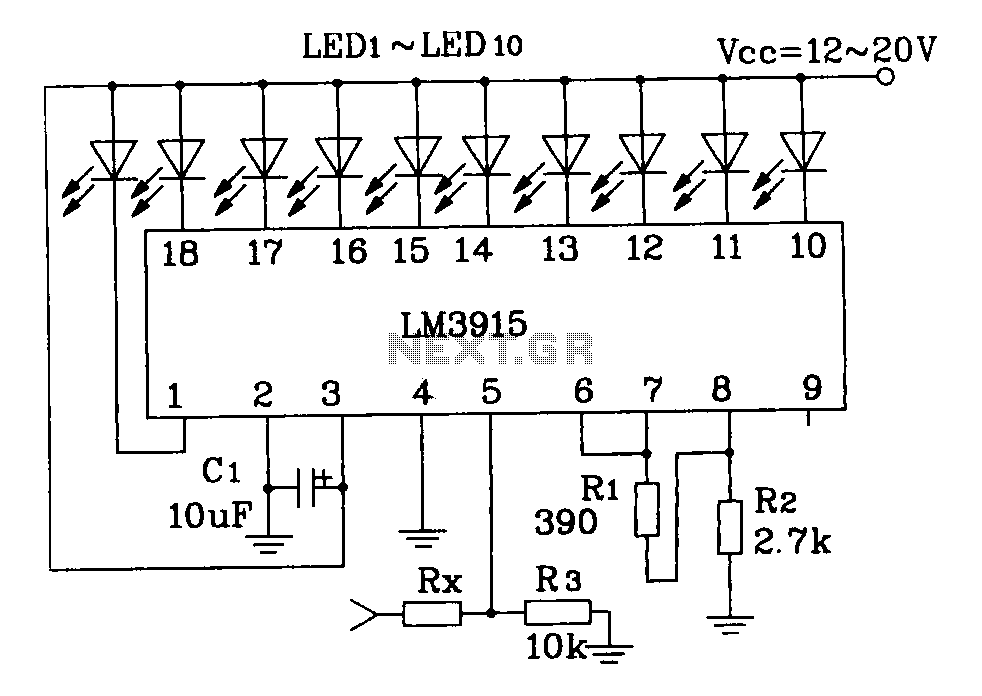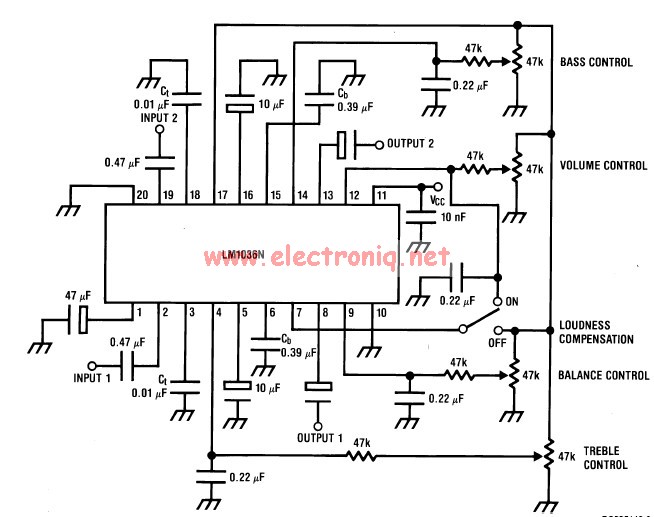
Audio Equalizer
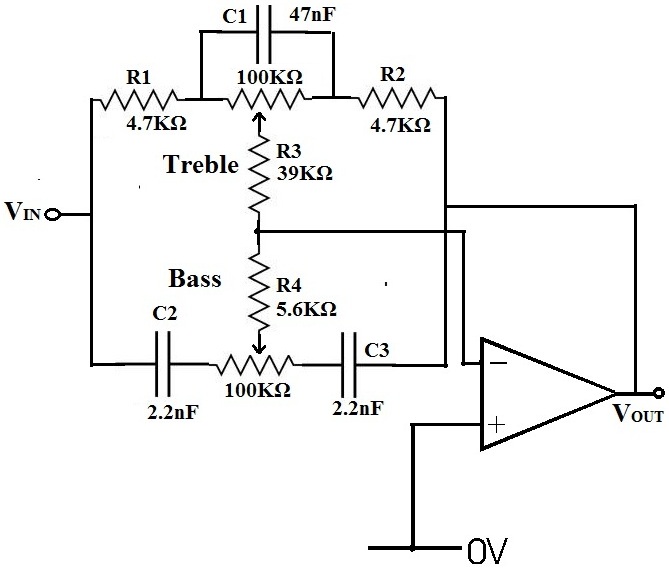
An equalizer is a device that allows for the adjustment of the gains of individual frequencies. For instance, to reduce bass, one would navigate to the frequency range around 500Hz and decrease the volume. Conversely, to enhance treble, one would adjust the volume at approximately 2KHz. To enable an equalizer to identify which frequency range to modify, it operates on the principle of filtering, necessitating the filtration of individual frequencies for independent adjustment. Consequently, equalizers are composed of filters. An equalizer typically consists of multiple filters that can either cut or boost the amplitude of frequencies across various ranges. The treble control adjusts the response above 1KHz with a maximum boost or cut of about 20dB at 10KHz, while the bass control adjusts the response below 1KHz with a similar range of 20dB at 50Hz.
An equalizer circuit is fundamentally designed to manipulate audio signals by selectively altering the gain of specific frequency bands. This is achieved through the implementation of various filter types, such as low-pass, high-pass, band-pass, and notch filters. Each filter is tuned to target a specific frequency range, allowing the user to either attenuate or amplify the desired audio frequencies.
In a typical graphic equalizer, a series of band-pass filters are arranged, where each filter corresponds to a particular frequency band. The output of these filters is then routed to a summing amplifier, which combines the adjusted signals into a single output signal. The user interface usually consists of sliders or knobs for each frequency band, enabling intuitive and precise adjustments.
The design of the equalizer may include operational amplifiers (op-amps) configured in a feedback loop to achieve the required gain and frequency response characteristics. The choice of component values, such as resistors and capacitors, directly influences the cutoff frequencies and the slope of the filters. Additionally, the equalizer may incorporate a bypass switch, allowing the user to compare the processed signal with the original unaltered signal.
In terms of performance, the equalizer should maintain a flat frequency response when all controls are set to neutral, ensuring that the audio signal remains uncolored by the equalization process. The power supply for the equalizer circuit must provide adequate voltage and current to support the operational amplifiers and any other active components, ensuring reliable operation across the intended range of audio frequencies.
Overall, the equalizer serves as a crucial tool in audio processing, allowing for tailored sound reproduction that meets the user's preferences and compensates for acoustic anomalies in various listening environments.An equalizer is a device that allows you to adjust the gains of individual frequencies. You may want to lower bass, so on an equalizer, you would go to the frequency range of bass, which may be around 500Hz and turn down the volume. If you want to increase treble, you may go to, say, 2KHz, and turn the volume up. In order for an equalizer to know which frequency range to adjust, it operates on the concept of filtering, meaning it must filter the individual frequencies so they can be individually adjusted. So equalizers are made up of filters. An equalizer consists of one or or filters which can cut or boost the amplitude of frequencies in various ranges.
The treble control cuts or boosts the response above 1KHz to a maximum of about 20dB at 10KHz. The bass control cuts or boosts the response below 1KHz to a maximum of about 20dB at 50Hz. 🔗 External reference
An equalizer circuit is fundamentally designed to manipulate audio signals by selectively altering the gain of specific frequency bands. This is achieved through the implementation of various filter types, such as low-pass, high-pass, band-pass, and notch filters. Each filter is tuned to target a specific frequency range, allowing the user to either attenuate or amplify the desired audio frequencies.
In a typical graphic equalizer, a series of band-pass filters are arranged, where each filter corresponds to a particular frequency band. The output of these filters is then routed to a summing amplifier, which combines the adjusted signals into a single output signal. The user interface usually consists of sliders or knobs for each frequency band, enabling intuitive and precise adjustments.
The design of the equalizer may include operational amplifiers (op-amps) configured in a feedback loop to achieve the required gain and frequency response characteristics. The choice of component values, such as resistors and capacitors, directly influences the cutoff frequencies and the slope of the filters. Additionally, the equalizer may incorporate a bypass switch, allowing the user to compare the processed signal with the original unaltered signal.
In terms of performance, the equalizer should maintain a flat frequency response when all controls are set to neutral, ensuring that the audio signal remains uncolored by the equalization process. The power supply for the equalizer circuit must provide adequate voltage and current to support the operational amplifiers and any other active components, ensuring reliable operation across the intended range of audio frequencies.
Overall, the equalizer serves as a crucial tool in audio processing, allowing for tailored sound reproduction that meets the user's preferences and compensates for acoustic anomalies in various listening environments.An equalizer is a device that allows you to adjust the gains of individual frequencies. You may want to lower bass, so on an equalizer, you would go to the frequency range of bass, which may be around 500Hz and turn down the volume. If you want to increase treble, you may go to, say, 2KHz, and turn the volume up. In order for an equalizer to know which frequency range to adjust, it operates on the concept of filtering, meaning it must filter the individual frequencies so they can be individually adjusted. So equalizers are made up of filters. An equalizer consists of one or or filters which can cut or boost the amplitude of frequencies in various ranges.
The treble control cuts or boosts the response above 1KHz to a maximum of about 20dB at 10KHz. The bass control cuts or boosts the response below 1KHz to a maximum of about 20dB at 50Hz. 🔗 External reference
